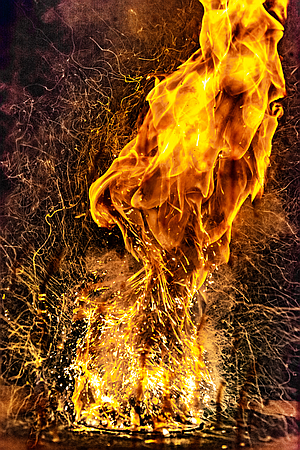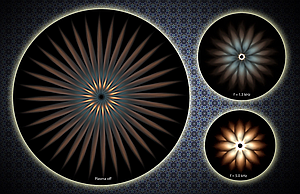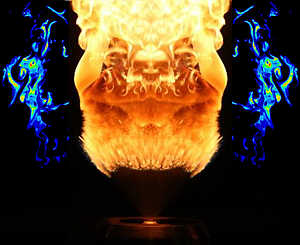
“Boil-over is a phenomenon typically observed when extinguishment of oil fires is attempted by using water. Water tends to sink to the bottom of the oil layer and vaporizes rapidly upon boiling, expelling droplets from the oil layer. This significantly enhances the burning rate and size of the flame. In our experiments to simulate in-situ oil spill burning, crude oil was burned over a water layer 10 cm in diameter, resulting in boil-over. In this photograph, the lower portion of the flame is inundated by burning oil droplets expelled from the boiling liquid, later ‘painting’ smoky streaks which resembles a Jackson Pollock painting. This image was captured using a Nikon D7100 at f/4.5 with an exposure time of 0.4 ms. The authors thank the Bureau of Safety and Environmental Enforcement (E17PC00016) for supporting this work.”
Sriram Bharath Hariharan, Michael J. Gollner, Elaine S. Oran (University of Maryland)

“While we are all used to conventional comparison among flame structures, the flames can be seen and compared from a different point of view. Three diffusion flames created using a nanosecond discharge plasma-assisted burner are shown in the photos, each corresponding to a specific discharge frequency. The flame photos have been rotated around the burner nozzle and shaped beautiful flower-like images.”
Saeid Zare, Shrabanti Roy, and Omid Askari (Mississippi State University)

“The image illustrates toluene spray flame using an annular co-flow spray burner and soot planar laser induced incandescence.”
Radi Alsulami, Brye Windell, and Bret Windom (Colorado State University)